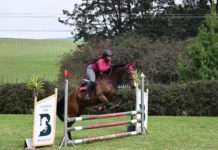On 26 October 2017 at 18h30 for 19h00, the Apartheid museum in Johannesburg will be launching a new wing – the George Bizos Gallery – a few weeks ahead of Bizos’ 90th birthday.
The life and contribution of George Bizos to the quest for freedom and democracy in South Africa has intersected with key events in the country’s history. As an advocate defending anti-apartheid activists like Nelson Mandela, as a representative of the nameless poor and vulnerable, or as a participant drawing up South Africa’s Constitution in the democratic era, he has expounded principles and practices that continue to resonate with universal struggles for justice.
- An iconic building
The George Bizos Gallery is part of the iconic building which houses the Apartheid Museum. The narrative of the museum is not only in the exhibition but also in the very structure of the building.
The latest addition to the Apartheid Museum’s complex of exhibition halls, the George Bizos Gallery, is something between a ‘museum’ and a ‘gallery’ itself. The stark, paired-down material palette of the original museum’s interior is echoed in this large, flexible exhibition hall, with cement floors, concrete walls and exposed services. The tall volume and uncluttered floor plan makes this an ideal space for temporary exhibitions, functions and conferences.
Contrasting with the embedded, bunker-like quality of the original museum, the expansive form of the new George Bizos Gallery opens the door for a renewed relationship with the landscape and city beyond.
- Launch of Odyssey to Freedom
This event will also include the launch of an exhibition on the life and times of George Bizo entitled Odyssey to Freedom.
The exhibition comprises a documentary on Bizos with exclusive footage of him at his family home in Greece. There are also glimpses of comrades and friends such Archbishop Desmond Tutu and Arthur Chaskalson QC honouring him. A riveting aspect is Bizos in full flight at the amnesty hearing over the death in detention of Steve Biko.
A second element is a series of evocative banners with quotes from Bizos himself. Topics include his love for Greek history and philosophy, work and family, the TRC and amnesty process, as well as the Marikana massacre. A final component is a timeline that traces Bizos’s life in the context of key turning points in South African and global history.
- Launch of 65 Years of Friendship
Bizos’s memoir about his lifelong friendship with Mandela entitled 65 Years of Friendship will also be launched as part of the proceedings.
These two ‘country boys’ found each other while pursuing a career in law at Wits University in the late 1940s. Bizos’s description of meeting the young Mandela provides an endearing portrait of a fashion-conscious, gracious, curious and politically astute fellow student. Mandela suffered racism at the University, in legal circles and in the broader society. Bizos tried to mitigate the effects of this oppression.
From the mid-1950s Bizos and others assisted Mandela and Tambo in their practice, particularly during the Treason Trial (1956-1961). But it was during the Rivonia Trial (1963-1964), when the MK high command was on trial, that their friendship was tested. After much argument Mandela agreed to insert ‘if needs be’ into his speech from the dock to qualify the statement that he was prepared to die for a democratic society.
Over the next 27 years Bizos visited Mandela on Robben Island and later in Pollsmoor and Victor Verster prison. He was the source of news from the outside world, and Mandela’s connection to his family, whom he entrusted to Bizos’ care. Bizos defended Winnie Madikizela-Mandela 20 times over 35 years.
From the mid-1980s when senior government officials began talks with Mandela, Bizos acted as messenger and courier between Mandela, the officials and Tambo in exile.
After Mandela’s release, he and Mandela spent many hours discussing the shape of a new South Africa. Bizos turned down Mandela’s offer of a position in government or a judicial appointment in favour of continuing to work as an advocate.
It was a proud moment for Bizos when he accompanied Mandela on a visit to Greece in 2002. Here they renewed their discussions of the classics and their contemporary relevance.
On one occasion towards the end of his life, during one of Bizos’ many visits, Mandela called for his boots. When asked what he needed them for he said “George is here. He will take me to Qunu.”












